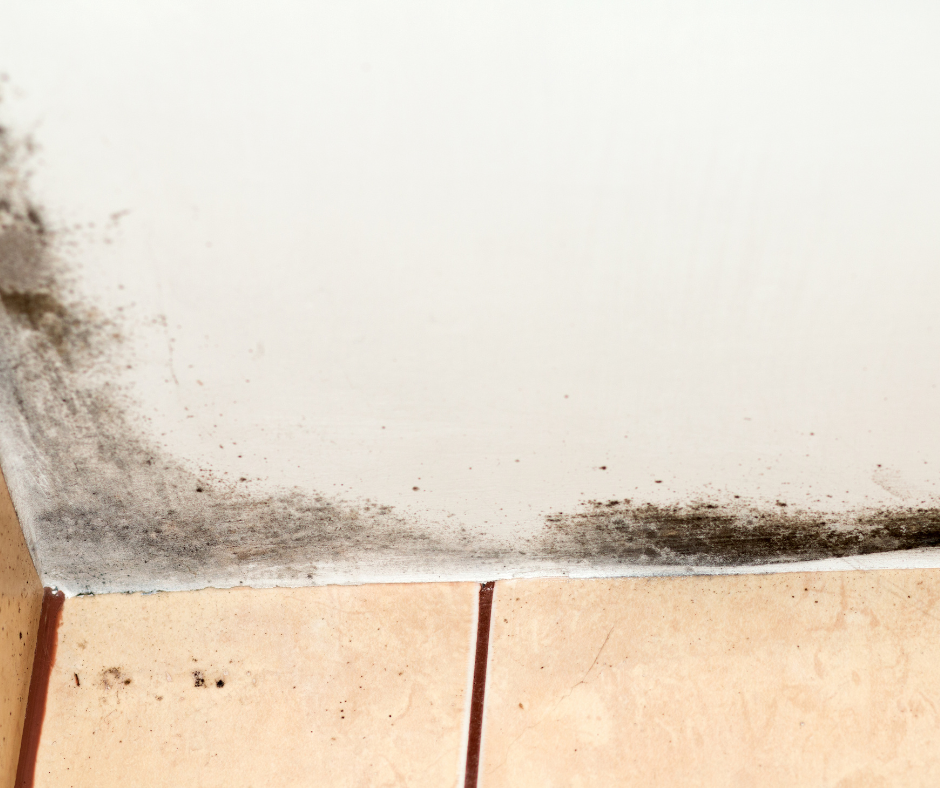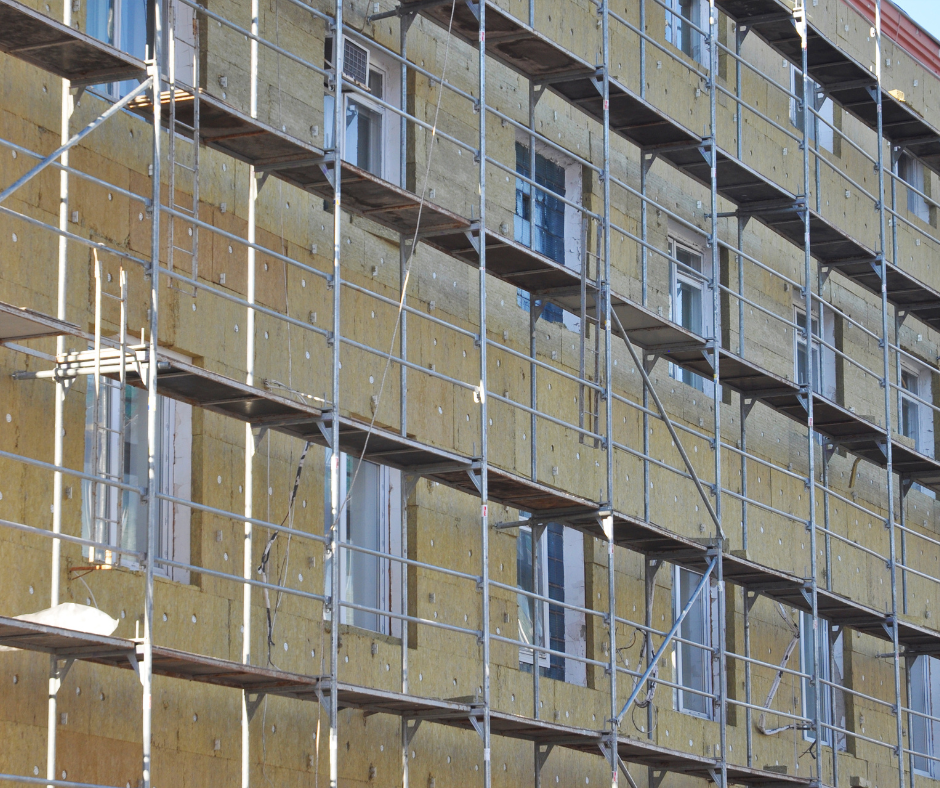Condensation occurs when warm, moist air comes into contact with a cooler surface, such as a window or a wall. Water vapour in the air condenses into liquid droplets on the surface as a result. If left unchecked, excess moisture can lead to mould growth, which can be harmful to your health.
Mould is a fungus that thrives in warm, humid conditions. It frequently appears on surfaces as black or greenish stains and has a musty, unpleasant odour. Mould can be extremely harmful to your health.
Mould exposure can result in a number of health issues, including infections, allergic reactions, and respiratory issues. Mould exposure is especially dangerous for people who already have respiratory problems like asthma or allergies. In severe cases, mould can cause life-threatening lung infections such as pneumonia.
How to prevent mould growth in your home?
The key is to keep the humidity and moisture levels in your home under control. Here are some preventative measures you can take:
Make sure that your home has adequate ventilation. Regularly open windows and doors to allow fresh air to circulate. To remove excess moisture from the air, use extractor fans in the kitchen and bathroom.
Modern homes with air tight glazing require added mechanical ventilation. It is vital to have extractor fans and cooker hoods fitted in the kitchen that circulate externally and remove excess moisture.
Avoid drying clothes on radiators, the moisture removed from the clothes circulates in the air and will increase the humidity level of the property.
Close bath room doors when using showers and baths to keep the moisture contained in the bathroom. Open windows and make sure extractor and are operational to remove the moisture before leaving the doors open.
Where possible cook with lids on pots and pans, in particular when boiling water. This will help reduce moisture in the air. Also make sure to use the cooker hood when cooking.
As soon as possible, repair any leaks or plumbing issues. Excessive moisture caused by plumbing issues and leaks can promote mould growth. Repair any leaks as soon as you discover them to avoid mould growth.
Dry soaked surfaces as soon as possible. Any wet surfaces in your home should be dried as soon as possible. To speed drying, use a fan or dehumidifier.
Making Use of a Dehumidifier If the air in your home is extremely moist or humid, a dehumidifier should be used to remove the excess moisture.
Check the humidity levels. Monitor the humidity levels in your home with a hygrometer. For the best results, aim for levels between 30% and 50%.
What to do If you have mould in your property?
To prevent mould from spreading and causing additional health problems, it is critical to remove it as soon as it appears in your home. Take the following steps to get rid of mould:
Put on your safety equipment. When removing mould, it is critical to take precautions against exposure. Put on gloves, a mask, and protective eyewear to avoid exposing your skin or mucous membranes to mould spores.
Clean the area completely. Scrub the mouldy area with a solution of water and a gentle detergent, such as sugar soap. Scrub the area thoroughly, paying special attention to any cracks or crevices where mould could be hiding.
Dry the area thoroughly. After cleaning, make sure the mouldy area is completely dry. Use a fan or dehumidifier to speed up the drying process. You should also use a disinfectant to remove any remaining mould spores.
Test Air Quality After Removal. After removing existing moulds from your property, it is critical that you test air quality on a regular basis using an indoor air quality monitor (available online) to ensure that no new outbreaks occur in the future as a result of their presence being undetected at the time.
What are the health issues caused by Mould?
Respiratory issues
Mould exposure can result in a variety of respiratory issues, such as coughing, wheezing, and difficulty breathing. Allergy sufferers may experience sneezing, a runny nose, and red, itchy eyes as a result of mould exposure. Mould exposure can aggravate asthma symptoms, causing people with asthma to have more frequent and severe asthma attacks. In severe cases, mould exposure can result in serious lung infections such as pneumonia. It is critical to keep mould at bay in your home to avoid these respiratory issues.
Asthma
Asthma symptoms can be exacerbated by mould exposure, resulting in more frequent and severe asthma attacks. Mould can be a significant trigger for asthma attacks in people who suffer from the condition. This is because mould produces microscopic spores that, when inhaled, can cause an allergic reaction in the airways. In asthmatics, this allergic reaction can cause airways to become inflamed and narrowed, resulting in difficulty breathing and asthma symptoms. Control mould growth in your home and avoid exposure to mould whenever possible to avoid asthma attacks caused by mould.
Skin conditions
Mould exposure can cause a number of skin conditions such as rashes, hives, and dermatitis. Mould-induced rashes commonly appear as red, itchy patches on the skin and can be uncomfortable and painful. In severe cases, mould exposure can lead to skin infections such as cellulitis. If you suspect you have a mould-related skin condition, see a doctor for an accurate diagnosis and treatment plan. Control mould growth in your home and avoid mould exposure whenever possible to avoid mould-related skin conditions.
Immune system suppression
Mould exposure may weaken the immune system, making a person more susceptible to infections and other health issues. The immune system is a complex network of cells, tissues, and organs that collaborate to keep the body healthy and free of infection and disease. When the immune system is suppressed, the body’s ability to fight illness and infection suffers.
There is evidence that mould exposure may suppress the immune system in a variety of ways. Mould, for example, can produce toxins known as mycotoxins, which can cause inflammation and damage to the body’s cells and tissues. This can weaken the immune system and reduce its ability to fight infections and diseases. In extreme cases this can lead to death.
Neurological problems
Mould can potentially cause neurological issues such as memory loss and difficulty concentrating if it is inhaled or ingested in sufficient amounts. The brain is a very complicated organ that is responsible for regulating many different bodily functions, including thinking, remembering, and movement. A wide variety of neurological issues can be brought on by trauma to the brain or by its inability to perform its normal functions.
Final thoughts
In conclusion, mould in your property can be hazardous to health if left untreated. It can cause serious health issues for you and your family, including allergies, asthma, and other respiratory problems.
Mould can also damage the structure of your home, leading to costly repairs. It’s important to be proactive in preventing mould from growing in your property by controlling humidity levels, fixing leaks, and cleaning up any water damage promptly. If you suspect that you already have mould, it’s important to address the issue as soon as possible.
Contact us today for a through assessment, advice or help with your ventilation requirements.



